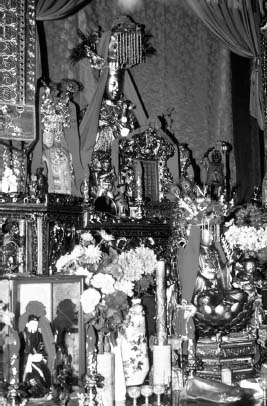Daoism and CctCustoms and Rituals |
Is there a standard Daoist group liturgical worship? |
Most of the ritual activity one can observe at temples throughout the day consists of individual or family worship. At various times during the day, members of pious organizations may gather for group chanting of liturgical prayers. The priest may address a sermon to such gatherings as well. Major Daoist sects have devised their own communal rituals, and some have survived intact into our time and are still practiced, especially in rural areas and more traditional villages. Many of these involve group chanting of sacred texts, in imitation of the chanting of the assembled gods themselves when they created the universe. One important communal ritual is that based on the teachings of the Ling Bao sect. Elaborate theatrical liturgies address issues and powers in three levels or “registers”—the celestial, the terrestrial, and the human. The Golden Register of rituals honors the family of the emperor at the celestial level. A terrestrial level called the Yellow Register is aimed at peaceful rest for the deceased. The now-discontinued Jade Register once focused on securing salvation for all people. Using ritual implements, the officiants mediate between the divine and human participants. Rites once dedicated to the emperor and his court are now undertaken on behalf of local or family groups known to uphold religious standards.
Observances begin with an evening or vespers prayer to announce the start of the rituals and symbolically reconstruct a sacred realm in which to enact the rites. Great attention goes into setting the ritual scene, a miniature of the cosmos with gates at the four cardinal directions. Action resumes the next morning with a fast and an offering. Imitating a creative divine act, the officiant recreates the sacred space by pacing out creation and journeys symbolically to the heavens to bring down heavenly powers. As part of the ritual the master (or priest) meditates silently, focusing on visual imagery as a way of bringing health to the assembled people. The entire ritual ends on the next day with the master facing the assembly as one now returned to Earth. He then dismantles the altar, burns the sacred texts, and sends the deities back to their heavenly abodes.

Main altar in a family temple in Honolulu, Hawaii, dedicated to the Empress of the West, known also as Mazu and by a variety of other names. Many such altars hold more than one image of the central deity (note the two with the fringed “mortar board” headdress) as well as images of other sacred figures. Thanks to Mrs. Au for showing the author around the temple
